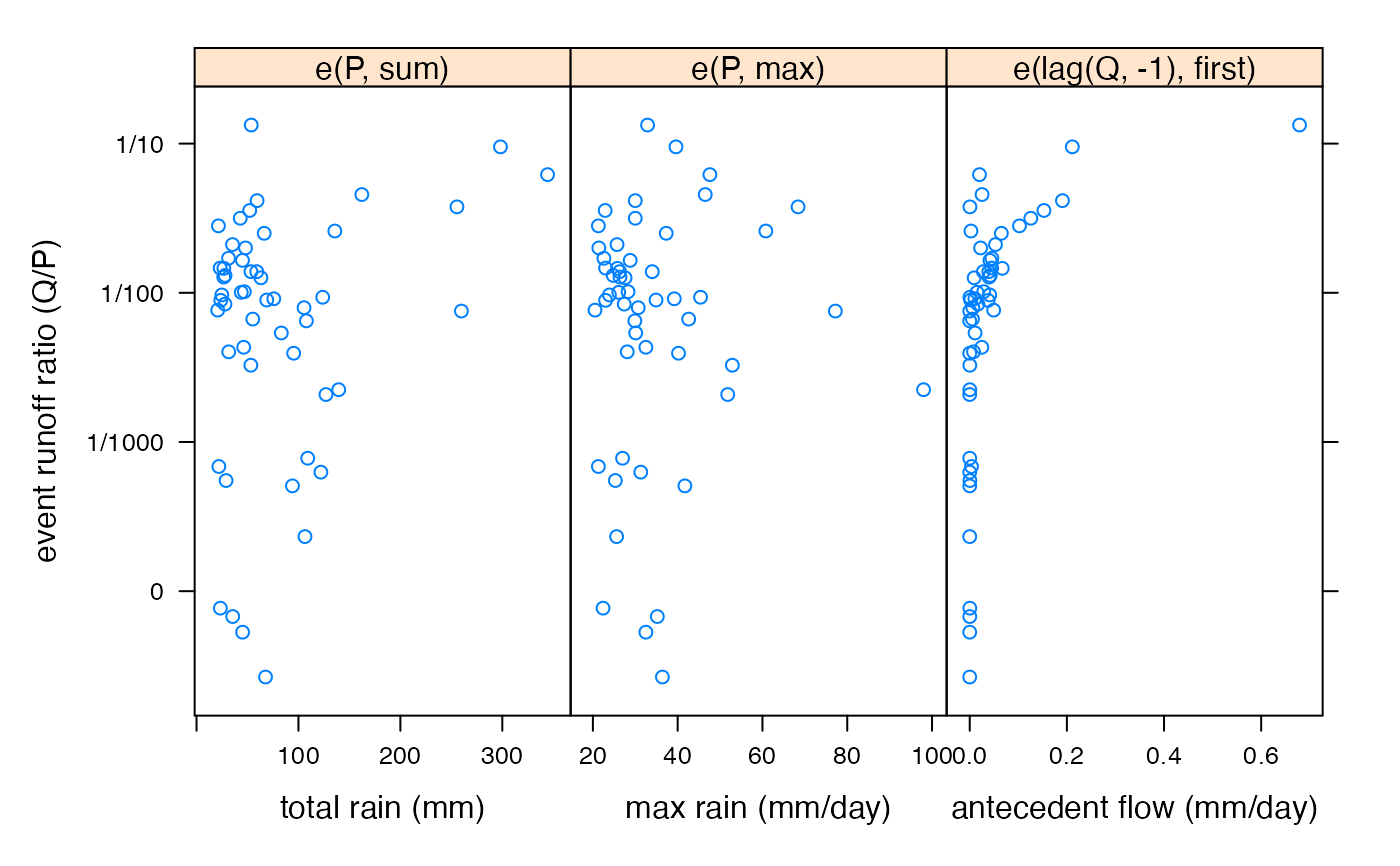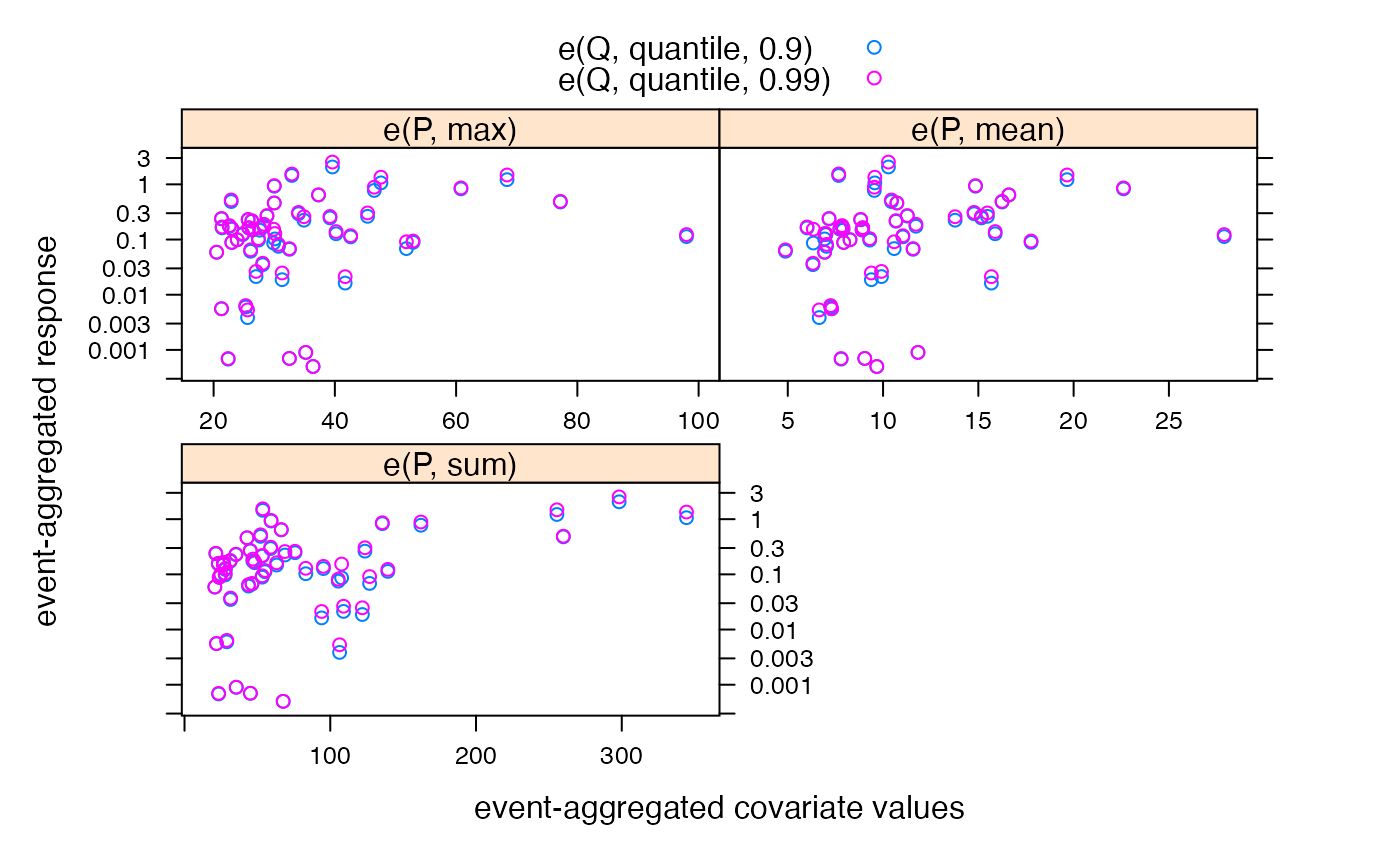Scatterplots with variables aggregated in event windows.
Arguments
- x
an object for the generic method; in the
formulamethod this is aformulaas described in the Details section. All terms in the formula should be aggregated in the givenevents; for this purpose a special functione()is defined as a shorthand foreventapply, with argumentse(X, FUN = sum, ...). The formula may specify a response (the left hand side of formula), which is treated as a single term, although it can be a matrix with multiple columns. Alternatively, the response matrix can be given inresponse. The covariate terms are also allowed to be matrix-like with the same number of columns as the response, in which case each column is plotted against the corresponsing column of the response.- ...
further arguments passed to
xyplot(actuallyxyplot.list).- data
data source giving variables used in the formula. Typically a
data.frame. Passed tomodel.frame.- events
event sequence produced by
eventseq, or a vector defining continguous groups on the specified variables.- response
a response vector or matrix corresponding to the variables in the formula. If this is given, any response in the formula is ignored.
- eFUN
a function to aggregate
response, if it is given, in the givenevents. If a reponse appears in the formula it should be in ae()term, andeFUNis not used.- as.table, layout, auto.key, xlab, ylab
passed to
xyplot.
Value
this function returns a trellis object which can be plotted.
See also
Examples
data(Canning)
ev <- eventseq(Canning$P,
thresh = 20, inthresh = 1, indur = 3,
continue = FALSE
)
event.xyplot(e(Q, sum) / e(P, sum) ~ e(P, sum) + e(P, max) + e(lag(Q, -1), first),
data = Canning, events = ev,
scales = list(y = list(log = TRUE)),
yscale.components = yscale.components.fractions,
ylab = "event runoff ratio (Q/P)", layout = c(3, 1),
xlab = c(
"total rain (mm)", "max rain (mm/day)",
"antecedent flow (mm/day)"
)
)
 ## multiple response variables
event.xyplot(cbind(e(Q, quantile, 0.9), e(Q, quantile, 0.99)) ~
e(P, max) + e(P, mean) + e(P, sum),
data = Canning, events = ev,
scales = list(y = list(log = TRUE)),
yscale.components = yscale.components.log10.3
)
## multiple response variables
event.xyplot(cbind(e(Q, quantile, 0.9), e(Q, quantile, 0.99)) ~
e(P, max) + e(P, mean) + e(P, sum),
data = Canning, events = ev,
scales = list(y = list(log = TRUE)),
yscale.components = yscale.components.log10.3
)
